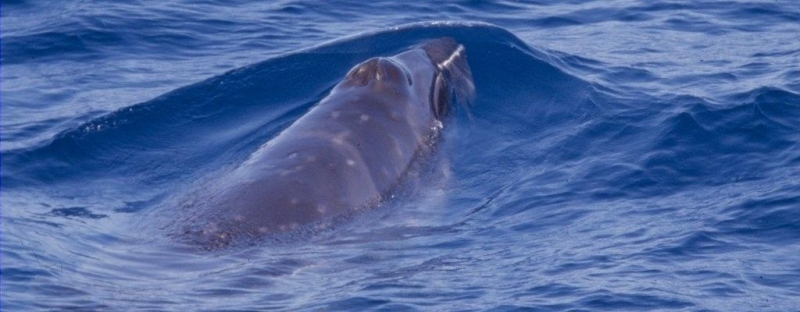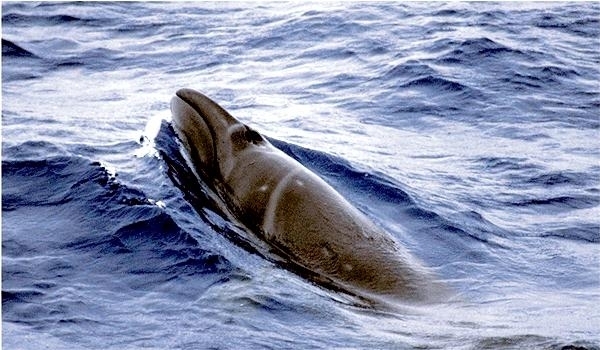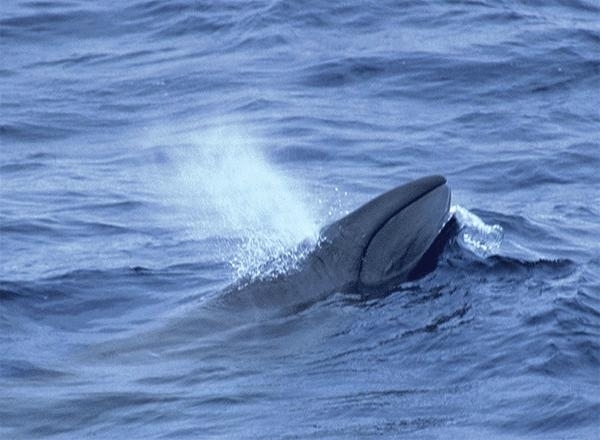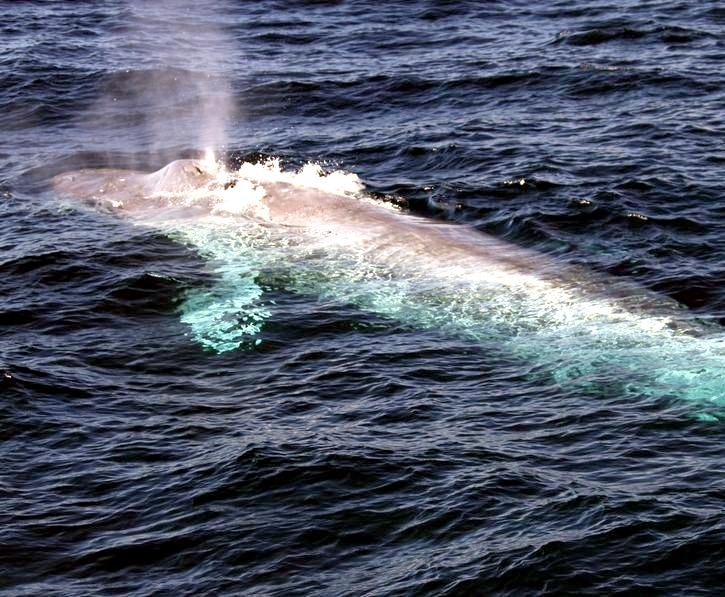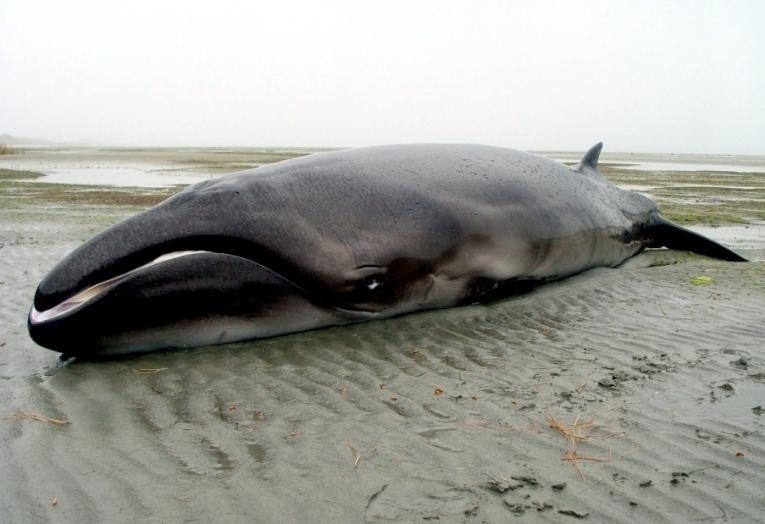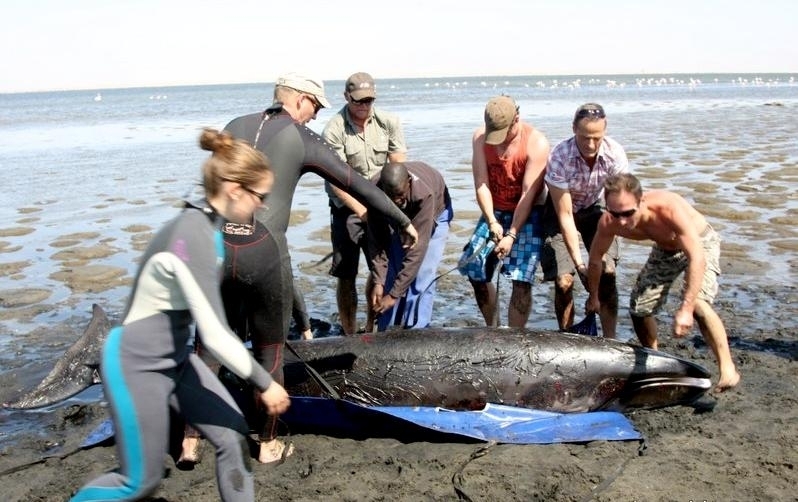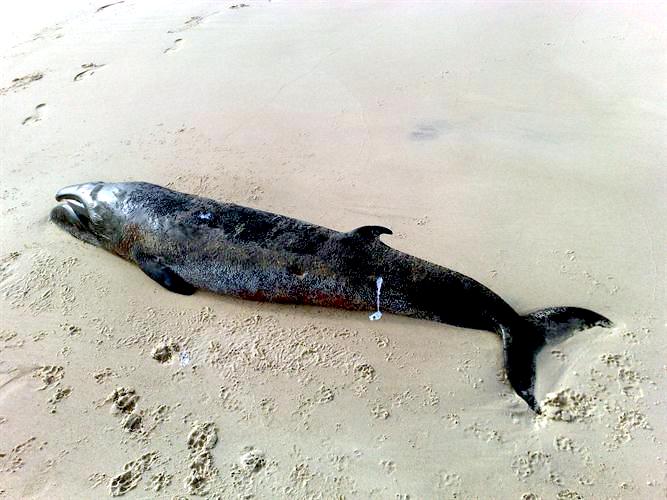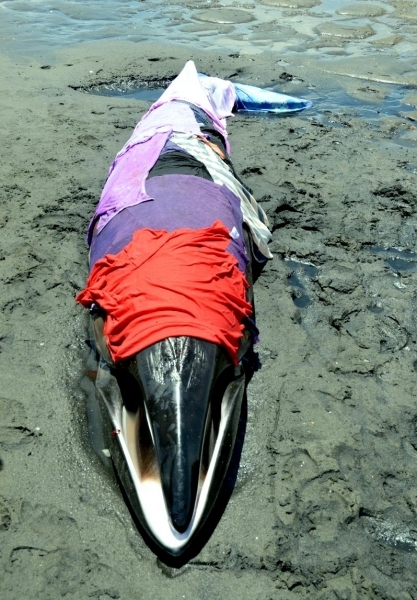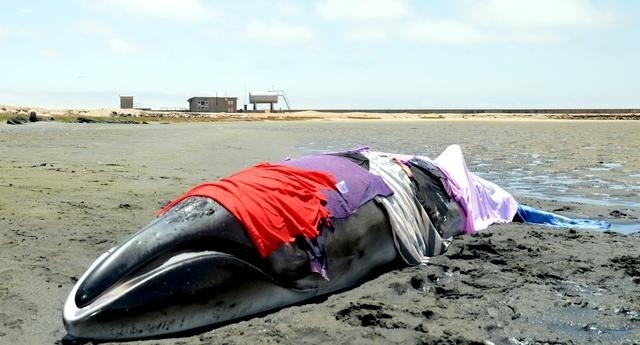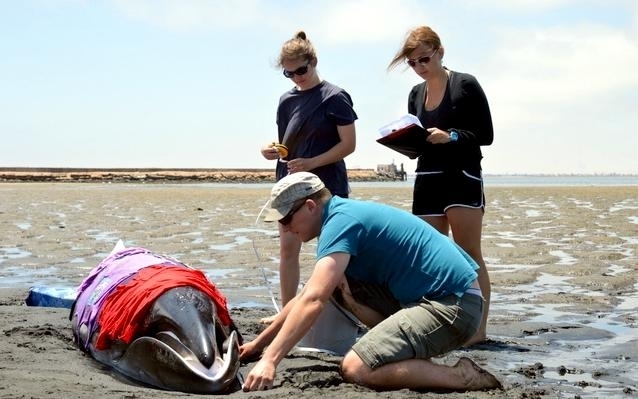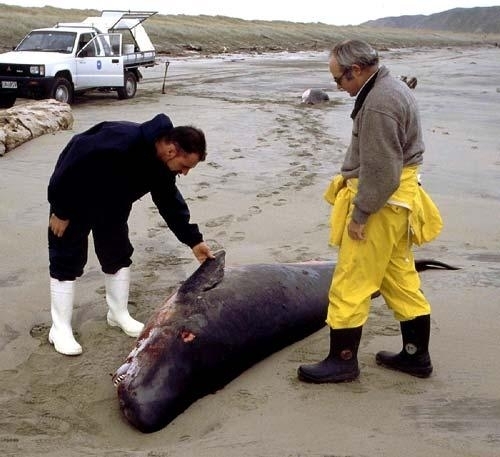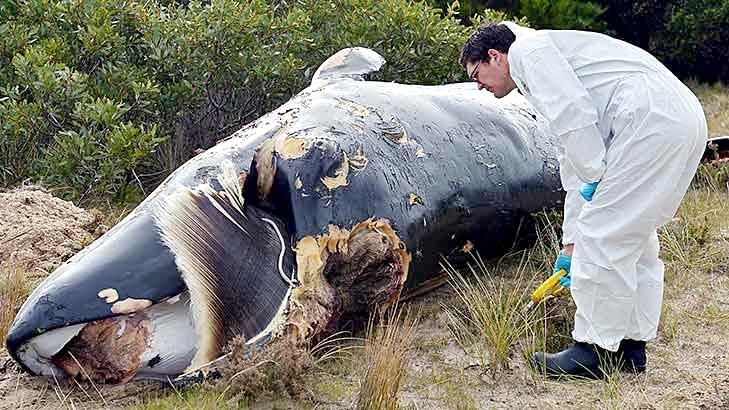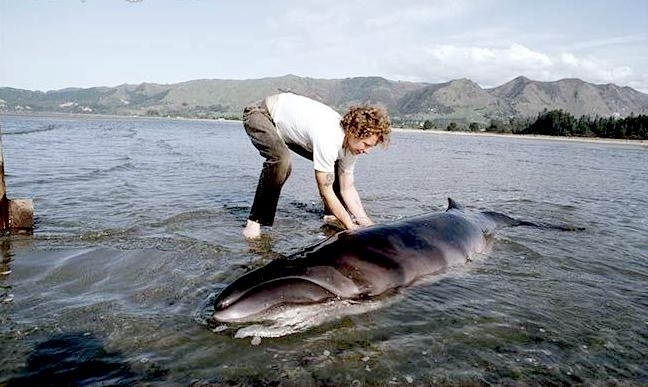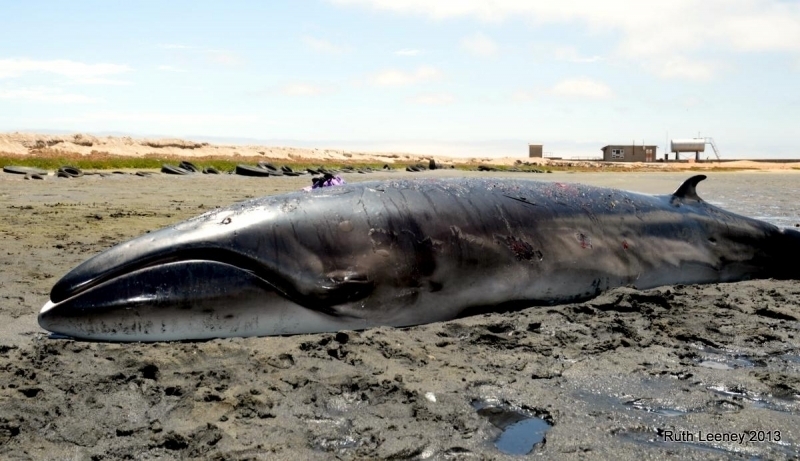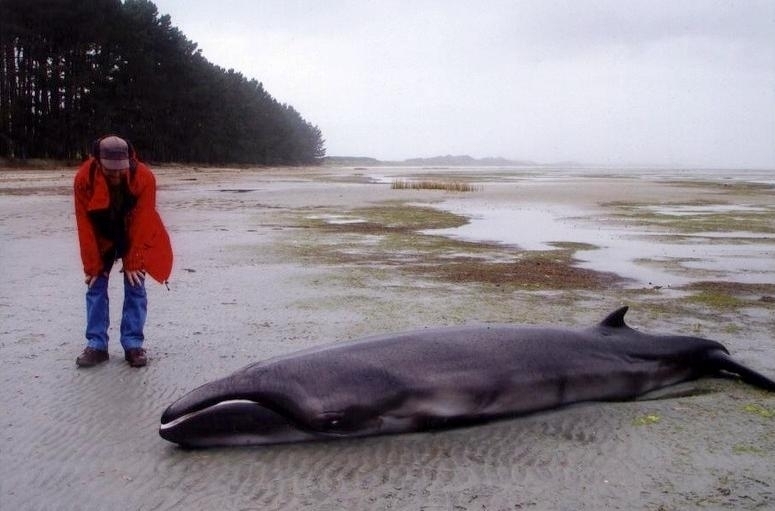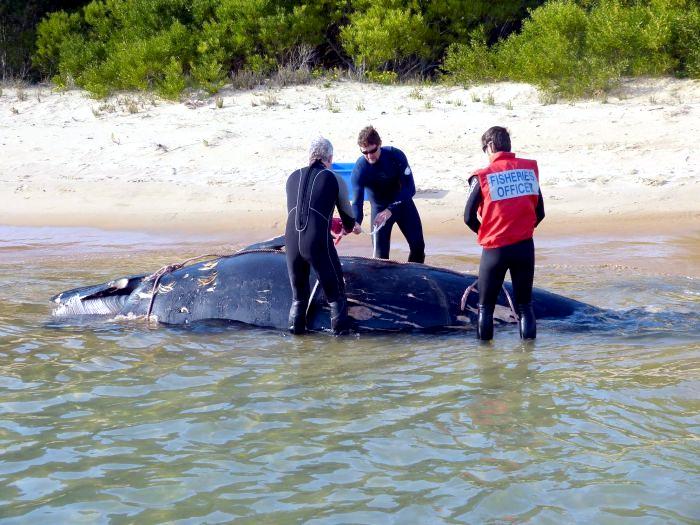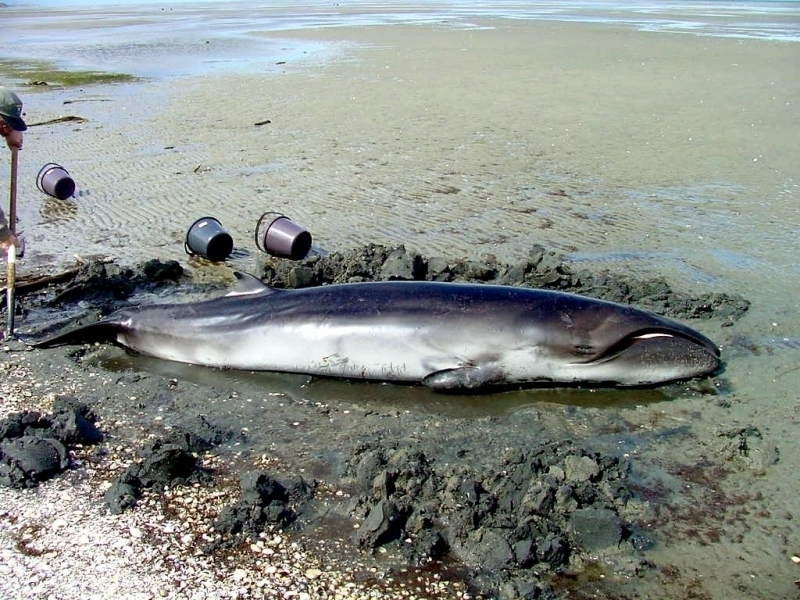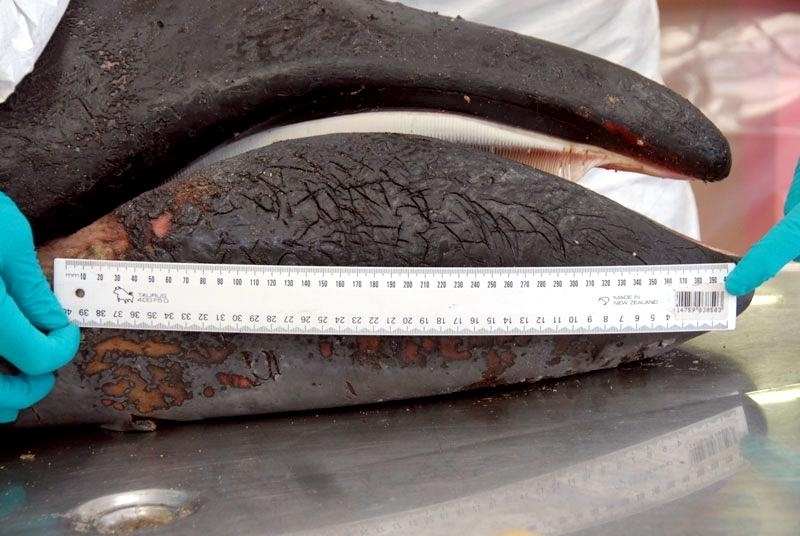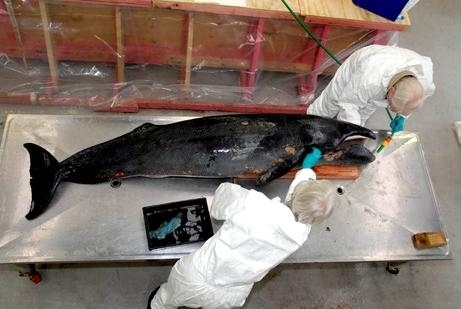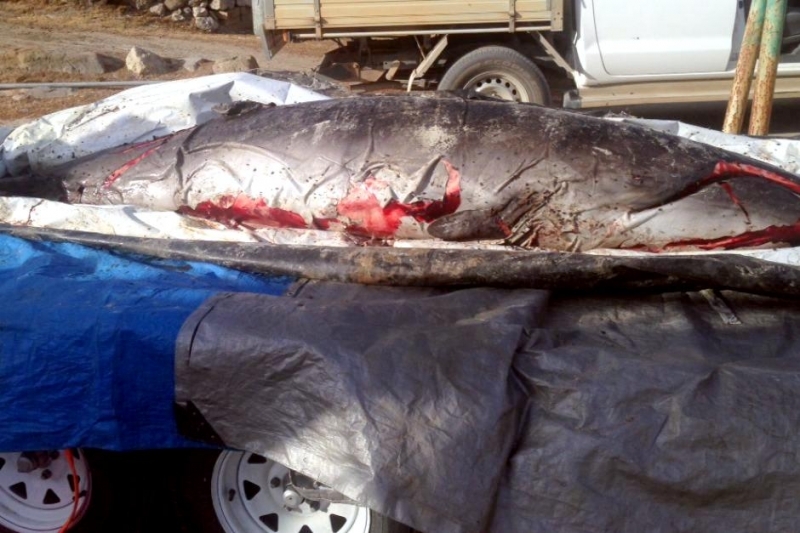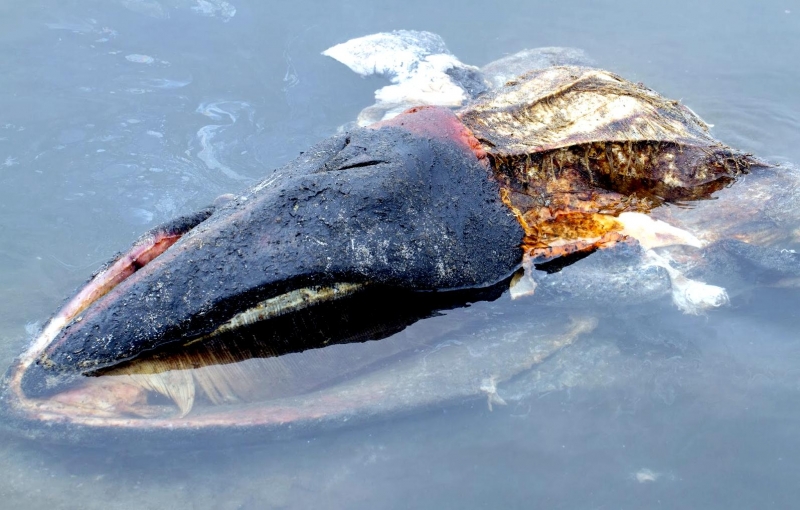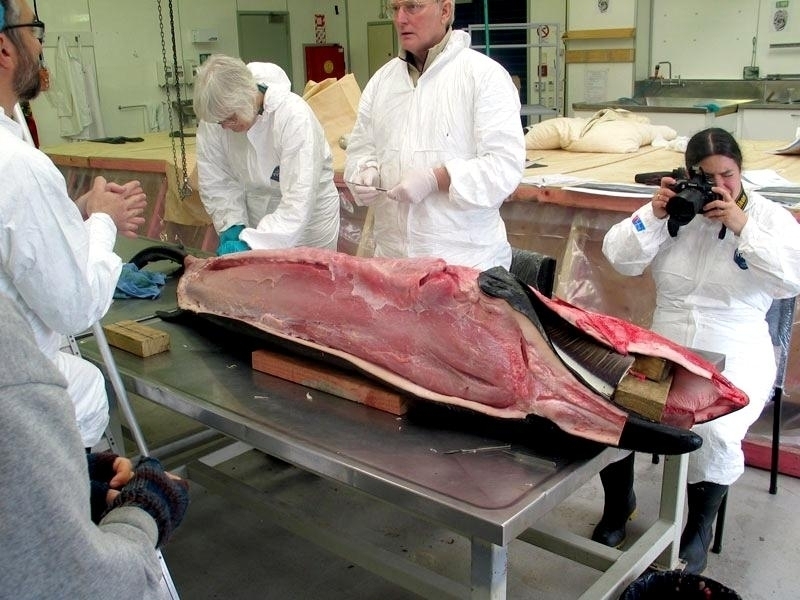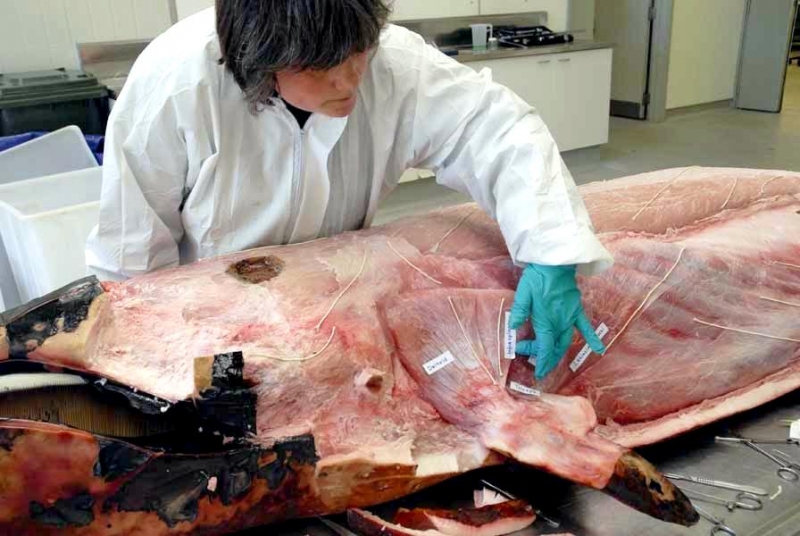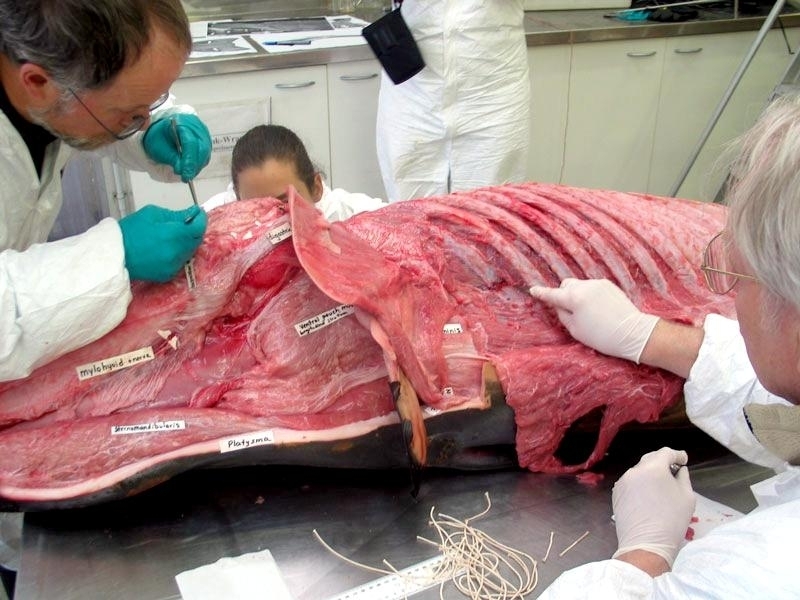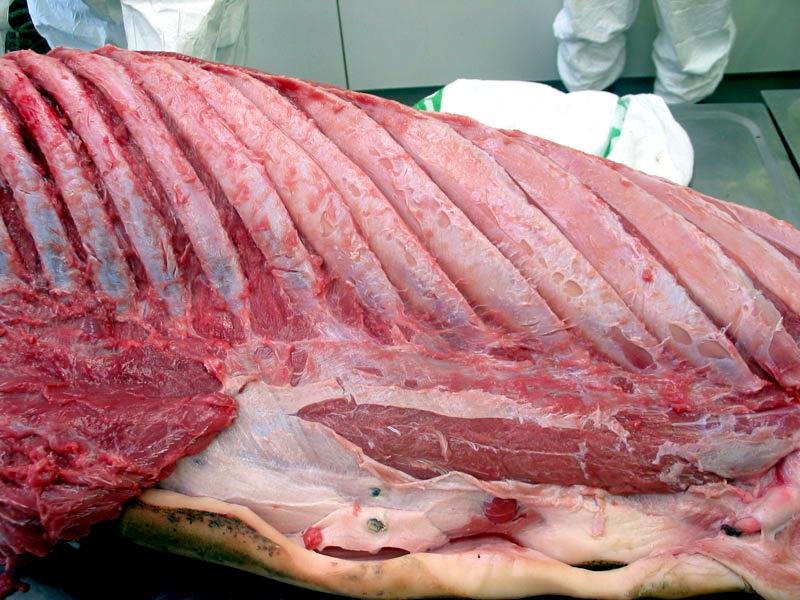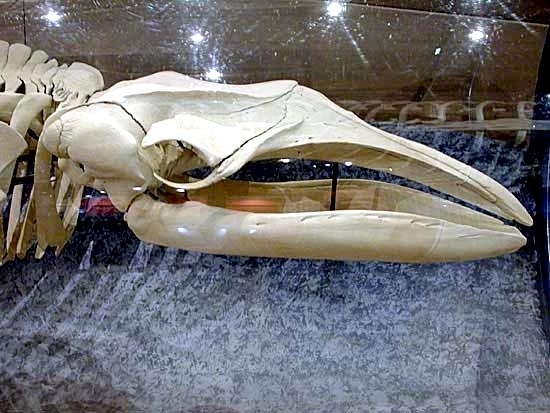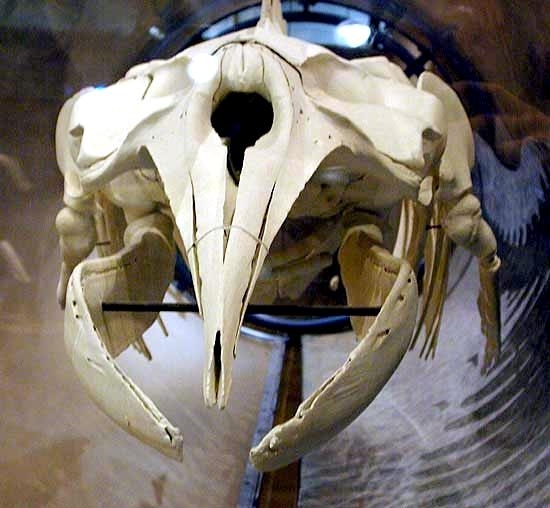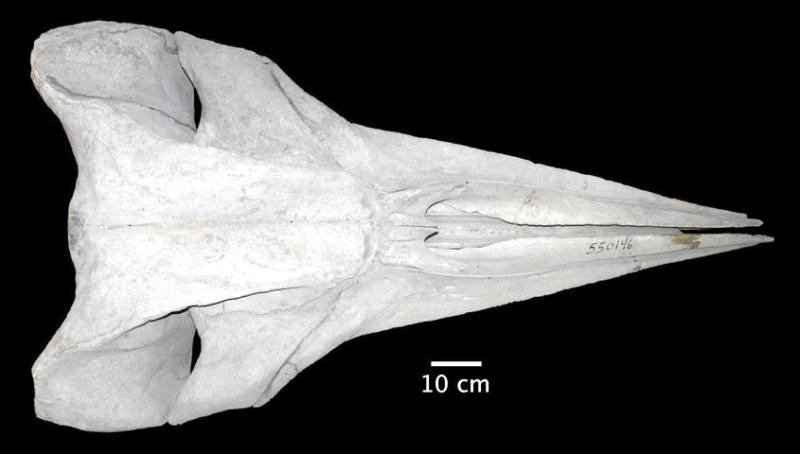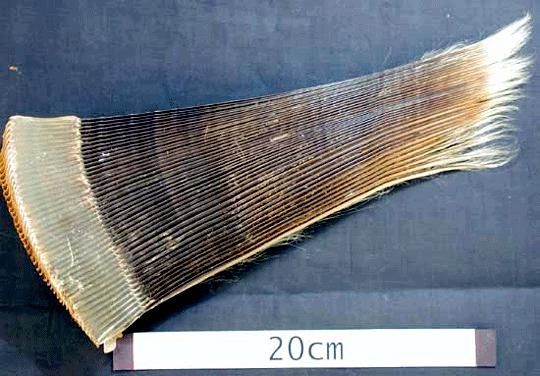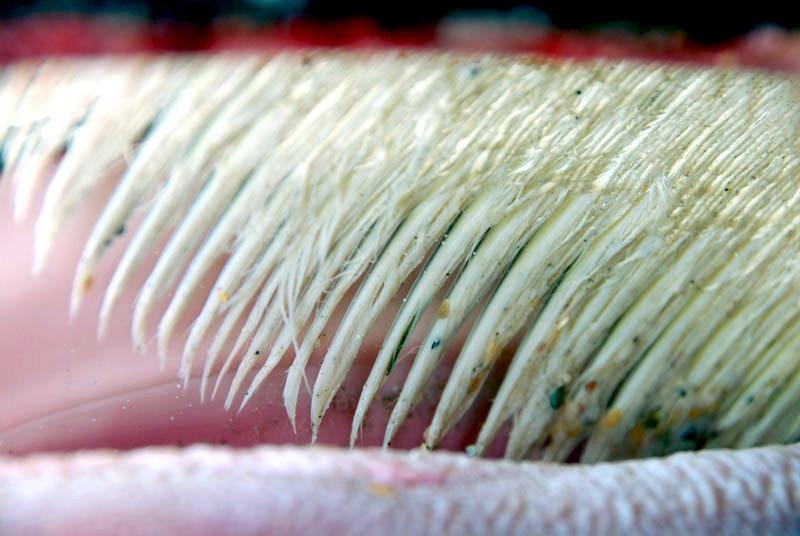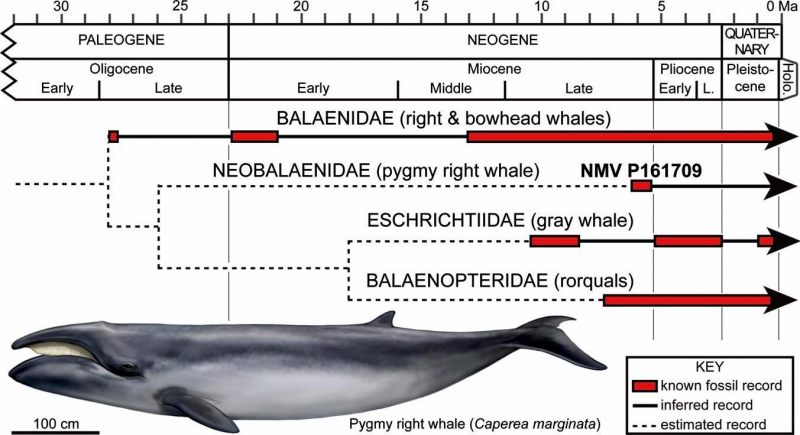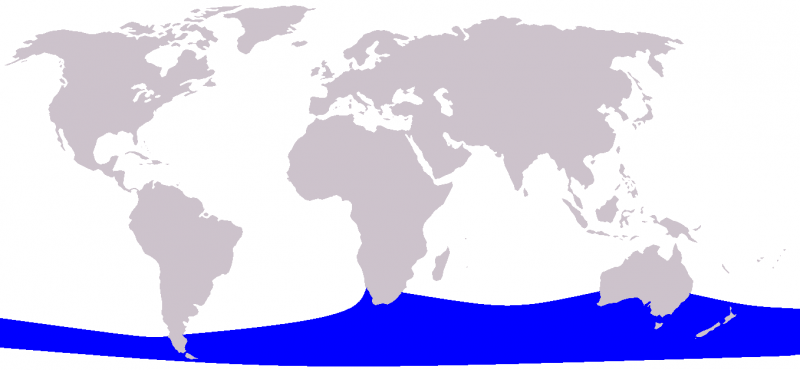“Caperea marginata”
Pygmy Right Whales average 6.1-6.4 meters in length & weigh a maximum of 4,500 kilograms. Males tend to be slightly smaller than females. They are dark gray on the dorsal side, which becomes increasingly darker with age and the ventral side is white. The flanks of the Pygmy Right Whale feature 2 distinct chevron-shaped markings. They have a small falcate (curved) dorsal fin located on the posterior end of the body. The small, narrow, rounded flippers are darker than the rest of the body. The tail flukes have a slight notch in the center. Researchers in New Zealand have found that the Pygmy Right Whale is not a right whale at all but is instead a member of the cetotheres family of baleen whales, which until now have been believed to be extinct. Pygmy Right Whales are classified in their own family called Neobalaenidae though it shares many characteristics such as mouth shape with other right whales. The upper jaw is arched while the lower jaw which extends slightly beyond the upper jaw is curved. They upper jaw features between 210-230 baleen plates on each side that measure up to 69 centimeters and are yellow-white with a dark brown band. The baleen plates of the Pygmy Right Whale are stronger & more flexible than other baleen whale species. Located on the throat are 2 grooves similar to the throat grooves of the Gray Whale. Pygmy Right Whales have small heads & small blowholes. Their skeletal structure consists of 17 pairs of broad, flat ribs that extend 2/3 of the body length towards the posterior end. They have more rib pairs than any other baleen whale, which some consider the reason to classify this species in a family by itself.
Pygmy Right Whales are found singly or in pairs although pods of up to 80 whales have been observed. Although little is known about them, it is thought that they do not exhibit common behaviors of other whales such as breaching or displaying their flukes. In one case, a Pygmy Right Whale was observed swimming by undulating the body from head to tail rather than swimming using movement of the tail & flukes like other cetaceans. These whales are very strong, fast swimmers. Pygmy Right Whales are found in temperate waters of the southern hemisphere. They are frequently sighted in Tasmania and seasonally along the coasts of South Australia, New Zealand, South Africa, the Falkland Islands and some areas of Antarctica. Pygmy Right Whales primarily feed on copepods, but examination of the stomach contents of stranded individuals show that krill is also part of their diet. Very little data exists on the reproductive habits of Pygmy Right Whales. Pregnant females have been found stranded in shallow waters, which may indicate that they give birth in shallow coastal waters. There is also some evidence that they move closer inshore to sheltered, shallow bays in spring & summer.

